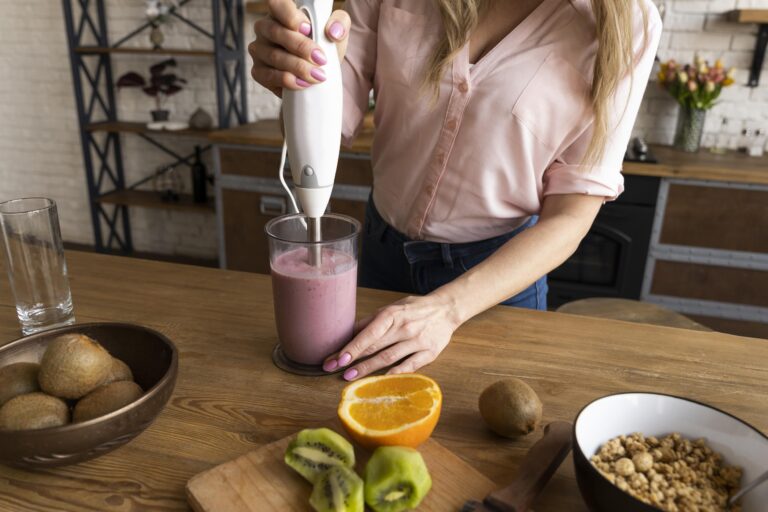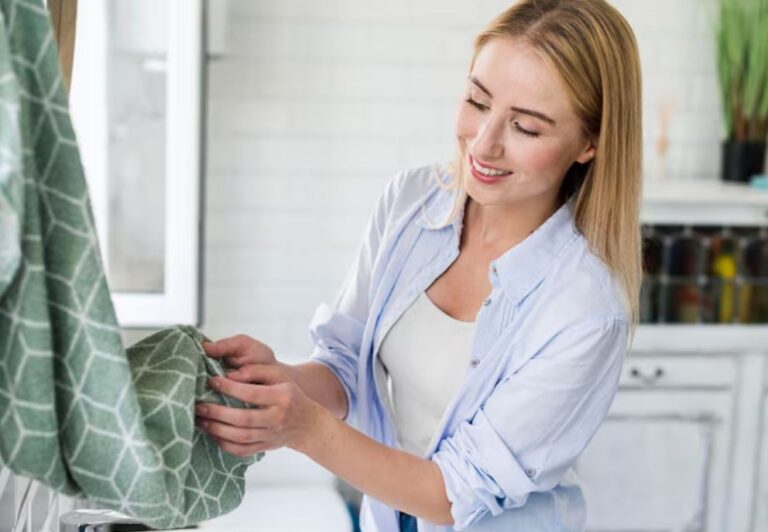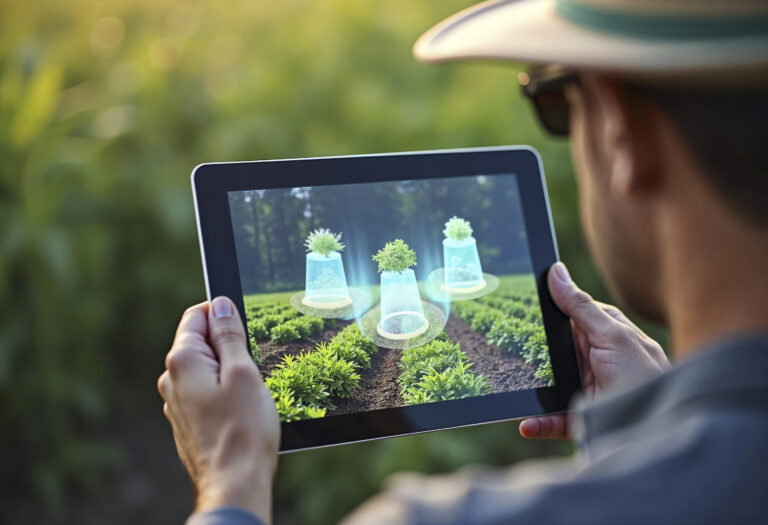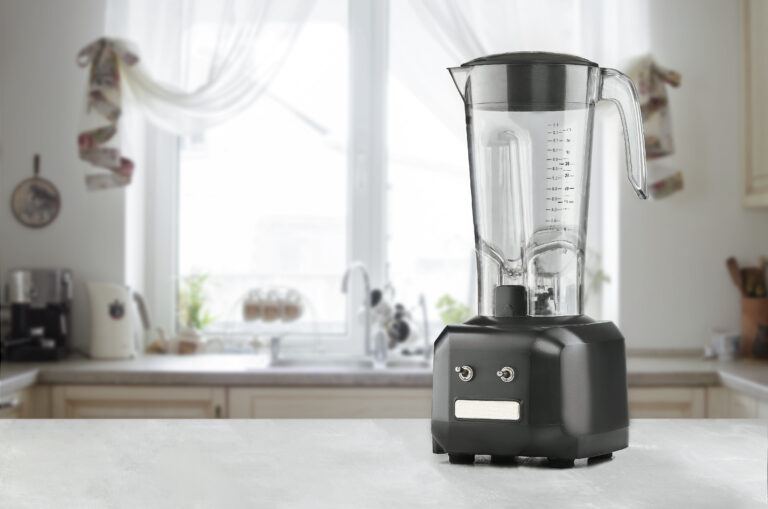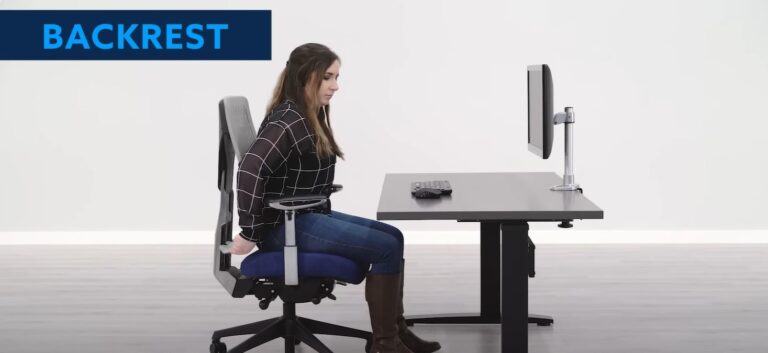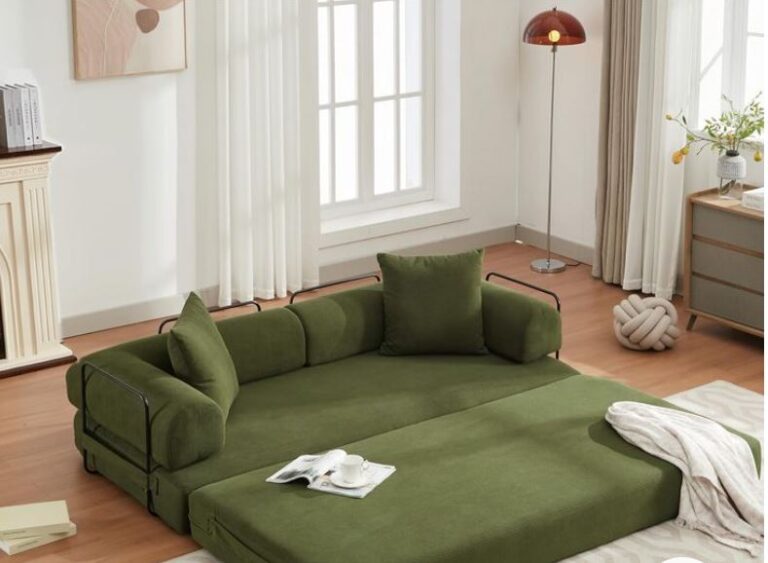Best Material for Tablecloths: A Complete Guide
A tablecloth is more than just a decorative accent for your dining room; it is a fundamental element of both style and protection. The right tablecloth can transform a table into the centerpiece of a room, setting a mood that ranges from casual and inviting to formal and elegant. But its most important function is to act as a shield, protecting your valuable table from the rigors of daily life—spills, scratches, and heat marks that can cause permanent damage.
The single most important factor in a tablecloth’s performance, durability, and aesthetic is its material. The fabric you choose dictates everything from how it feels to the touch to how easy it is to clean and how it drapes over the table. This guide will provide a complete and in-depth look at the most common and best tablecloth materials, helping you understand their unique properties so you can make an informed choice that perfectly fits your lifestyle and needs.
Table of Contents
ToggleNatural Materials for Tablecloths

Natural materials are derived from plants or animals and are celebrated for their classic feel, breathability, and timeless elegance. They offer a luxurious touch and a quality that often improves with age.
Cotton Tablecloths
Cotton is a perennial favorite and the most common natural fiber for table linens. It is soft, affordable, and incredibly versatile, making it a reliable choice for a wide range of uses.
- Pros and cons of cotton:
- Pros: Cotton is prized for its soft feel and classic, clean appearance. It drapes beautifully and can be ironed to a crisp, smooth finish, which is perfect for a formal look. It’s also breathable and easy to dye, so it’s available in a huge variety of colors and patterns. High-quality cotton is durable and can withstand many washes.
- Cons: Cotton wrinkles easily and requires ironing to look its best, which can be a time-consuming task. It is also not naturally resistant to stains; it absorbs liquids, so spills must be cleaned up immediately to prevent permanent marks. Cotton tablecloths are not waterproof.
- When to choose cotton: Cotton is a perfect all-around choice. You should choose a cotton tablecloth if you’re looking for an affordable, versatile, and traditional option. It works equally well for daily use as it does for formal dinners, provided you’re willing to handle the cleaning and ironing. It’s an ideal choice for a classic, timeless dining room.
Linen Tablecloths
Linen, made from the fibers of the flax plant, is a premium material known for its superior durability and unique texture. It has a beautiful, lived-in quality that makes it a favorite for those who appreciate natural and rustic elegance.
- Elegant and breathable: Linen has a distinct, visible weave and a soft, relaxed drape. Unlike the crispness of cotton, linen has a natural, slightly rumpled look that is part of its charm. It is also highly breathable and absorbent, making it feel cool to the touch. With every wash, a linen tablecloth becomes softer and more supple, taking on a unique character over time.
- Best uses for linen: Linen is best used to create a casually elegant or rustic vibe. It is a fantastic choice for a farmhouse dining room, a coastal-themed home, or for a special occasion where you want to create a warm, inviting atmosphere. Linen tablecloths are a long-term investment that, with proper care, can last for a generation.
Silk Tablecloths

Silk is the most luxurious and delicate material for tablecloths. Made from the fibers of the silkworm, it has an unparalleled smooth texture and a beautiful natural sheen.
- Luxury look and feel: A silk tablecloth instantly elevates any setting, adding a layer of glamour and sophistication. Its soft, flowing drape and lustrous surface create a truly opulent feel, making it the perfect choice for the most formal and high-end occasions. It is exceptionally soft to the touch and provides a smooth surface that feels exquisite.
- Downsides to silk tablecloths: The beauty of silk comes with significant downsides. It is incredibly delicate and prone to damage from water, heat, and spills. It stains very easily and generally requires professional dry cleaning, as washing can ruin the fabric. Because of its high cost and fragile nature, silk is not practical for everyday use and is best reserved for purely decorative purposes where it won’t be at risk of spills.
Synthetic Materials for Tablecloths

Synthetic materials are man-made and designed to be more durable, easier to care for, and more affordable than their natural counterparts. They are a practical, modern choice for a busy home.
Polyester Tablecloths

Polyester is the most popular synthetic material for tablecloths due to its excellent balance of cost, durability, and practicality. It is a workhorse fabric that can handle frequent use without a problem.
- Why polyester is popular: Polyester is popular because it is very affordable, highly resistant to wrinkles, and easy to clean. It can be dyed in a vast range of colors that hold up well over time without fading. It’s a great choice for event planners and restaurants due to its ability to look great without extensive care.
- Pros and cons:
- Pros: Polyester is a very durable, stain-resistant, and wrinkle-resistant fabric. It is machine washable and dries quickly, often without needing to be ironed. It holds its shape well and is generally a low-maintenance option that is perfect for everyday use.
- Cons: Polyester can feel less luxurious than a natural fiber like cotton or linen. It is not as breathable, and some people may find it feels sticky in warm, humid weather. It can also be more prone to showing oil-based stains if not treated quickly.
Vinyl Tablecloths
Vinyl tablecloths are the ultimate choice for protection and ease of cleaning. They are made from a plastic-based material that provides a waterproof surface.
- Waterproof and easy to clean: The main advantage of vinyl is that it is 100% waterproof and spill-proof. Spills from wine, juice, or oil simply bead up on the surface and can be wiped away with a damp cloth or sponge. This makes it an incredibly practical choice for households with kids or for messy craft projects. Modern vinyl tablecloths often come with a soft flannel backing that protects the table from scratches and adds a layer of cushioning.
- Best for outdoor dining: Vinyl is the ideal material for outdoor dining. It can withstand exposure to the elements, including sun and rain. It is easy to clean and can simply be wiped down after a barbecue or a picnic. It’s also great for indoor use on a kids’ table, where it offers peace of mind against spills and messes.
Satin Tablecloths
Satin is a type of weave, not a fiber itself, but it is most often made from a synthetic fiber like polyester. It is known for its smooth, glossy surface and elegant drape.
- Sleek and stylish: A satin tablecloth has a luxurious, shiny appearance that is perfect for a formal or glamorous event. It reflects light beautifully and creates a sleek, modern look. It is often used for weddings, banquets, and other celebratory events where the aesthetic is key.
- When satin works best: Satin works best when the goal is to create a visually striking and elegant setting. It is the perfect choice for a dessert table or a formal dinner. However, it is not a practical choice for everyday use, as it can be very slippery and difficult to keep on a table.
Blended Materials for Tablecloths
Blended materials are created by weaving together different types of fibers. This is done to create a material that combines the best characteristics of each fiber, resulting in a more balanced and versatile product.
Cotton-Polyester Blend
The cotton-polyester blend is the most common and popular blend for tablecloths. It offers a fantastic compromise between the feel of a natural fabric and the practicality of a synthetic one.
- Balanced benefits of both fibers: The cotton-polyester blend has the soft feel and breathability of cotton, but with the added durability and wrinkle resistance of polyester. It is much less prone to wrinkling than 100% cotton and is more resistant to shrinking. It is also often more affordable than pure cotton.
- Everyday practical use: This blend is a perfect choice for everyday use. It is easy to wash, dries quickly, and often needs little to no ironing. It can handle daily spills and frequent washing without losing its shape or color. If you are looking for a practical, all-around tablecloth that looks good and is easy to care for, a cotton-polyester blend is an excellent option.
Other Blends (Silk, Rayon, Acrylic)
In addition to the common cotton-polyester blend, there are other types of blended fabrics available.
- Niche options: Some blends are designed to achieve a specific look or feel. A blend of silk and rayon, for example, can create a tablecloth that has a soft, luxurious drape like silk but is more durable and less expensive. Acrylic blends are often used for outdoor tablecloths, as acrylic is a synthetic fiber that is very resistant to fading from the sun.
- Things to consider before buying: Before purchasing a blended tablecloth, be sure to check the exact fiber content. The ratio of the fibers will determine its feel and performance. Also, pay close attention to the care instructions, as they may differ from those of a single-fiber tablecloth.
Understanding Tablecloth Materials
Tablecloth materials can be broadly categorized into natural fibers, synthetic fibers, and blends of the two. Each category has its own distinct characteristics, advantages, and disadvantages. Understanding these differences is the first step toward finding a tablecloth that works for you.
- Natural Fibers: These come from plants or animals. The most common natural fibers used for tablecloths are cotton and linen. They are cherished for their classic feel, breathability, and timeless elegance. Natural fibers are absorbent, which is both a benefit and a drawback: they can soak up spills, but they are also more prone to staining.
- Synthetic Fibers: These are man-made fibers, with polyester being the most common for tablecloths. Synthetics are engineered to be durable, stain-resistant, and easy to care for. They are often less expensive than natural fibers and can be produced in a wide variety of colors and textures.
- Blends: Many tablecloths are made from a blend of natural and synthetic fibers, such as a cotton-polyester blend. This combination is designed to harness the best of both worlds—the soft feel of cotton with the durability and easy-care properties of polyester.
What Makes a Good Tablecloth Material?
The perfect tablecloth material is a blend of several key attributes. The ideal choice for one person may be different for another, depending on their priorities. By evaluating materials based on these four factors, you can determine which one is right for you.
Durability and Longevity
A good tablecloth should be able to withstand frequent use and repeated washing without fraying, pilling, or losing its shape.
- Linen: Linen is arguably the most durable natural fiber. Threads spun from the flax plant are incredibly strong and resistant to wear and tear. A high-quality linen tablecloth is an investment that can last for decades, often becoming softer and more beautiful with each wash. It is an heirloom-quality material that holds up exceptionally well.
- Polyester: As a synthetic fiber, polyester is engineered for toughness. It is highly resistant to stretching and shrinking and holds its shape exceptionally well. Polyester tablecloths can handle machine washing and drying with minimal fuss. They do not pill and are resistant to tears, making them a very reliable and long-lasting choice for high-traffic environments.
- Cotton: The durability of cotton varies greatly depending on the quality of the cotton and the weave. A tight-weave, high-quality cotton will be durable, but a lower-quality cotton can be prone to pilling and thinning over time. It is a reliable material, but may not have the same longevity as linen or polyester.
- Vinyl: A heavy-duty, padded vinyl tablecloth is one of the most durable options for protecting a table. The PVC vinyl surface is highly resistant to tearing, cracking, and damage from spills. The flannel backing on many vinyl tablecloths also protects the material itself from damage.
Ease of Cleaning
For a tablecloth to be practical, it must be easy to clean. This is one of the most significant differences between various materials.
- Vinyl: The undisputed champion of easy cleaning. A vinyl tablecloth is wipeable and waterproof. Spills and food messes simply bead up on the surface and can be wiped away with a damp cloth or sponge. This eliminates the need for machine washing and makes it the most convenient choice for messy meals or parties.
- Polyester: Most polyester tablecloths are highly stain-resistant and machine washable. They do not absorb liquid as quickly as natural fibers, allowing you to blot up a spill before it sets in. Polyester dries quickly and is very easy to care for, often requiring little to no ironing.
- Cotton: Cotton is machine washable, but it is not naturally resistant to stains. Common food and drink spills can be absorbed quickly, so immediate cleaning is crucial. Cotton tablecloths often require pre-treating for tougher stains. They can also take a while to dry and will almost always need to be ironed for a smooth, presentable finish.
- Linen: Linen is also machine washable, but it can be more difficult to clean than a synthetic material. It is highly absorbent, which makes it prone to staining. Linen also wrinkles heavily in the wash, so if you want a pressed look, ironing is a significant part of the care process.
Resistance to Stains and Wrinkles
No one wants to see a beautiful tablecloth ruined by a spill or a wrinkle. Different materials offer varying levels of resistance to these common issues.
- Stain Resistance:
- High Resistance: Vinyl and polyester lead the way here. They are both non-porous or have a tight-weave that makes them highly resistant to stains.
- Low Resistance: Natural fibers like cotton and linen absorb liquids quickly, making them more susceptible to staining. You must be prepared to act quickly to clean up spills.
- Wrinkle Resistance:
- High Resistance: Polyester is a very wrinkle-resistant material. It comes out of the dryer looking smooth and often requires no ironing.
- Low Resistance: Both cotton and linen are prone to heavy wrinkling. A crumpled linen tablecloth is a desired aesthetic for a rustic look, but a heavily wrinkled cotton one is usually seen as unkempt. Ironing is a necessity for a crisp appearance.
Aesthetic Appeal
The look and feel of a tablecloth are crucial for setting the tone of your dining experience.
- Cotton: Cotton offers a clean, crisp, and polished look. It is the classic choice for a timeless, elegant table setting. The smooth texture feels luxurious and looks sophisticated.
- Linen: Linen provides a textured, organic, and rustic appeal. Its soft drape and natural wrinkles give it a casual yet chic look. It feels warm and inviting, making it perfect for creating a cozy atmosphere.
- Vinyl: Modern vinyl tablecloths can come in a variety of colors and even realistic prints, such as wood grain. While they are not as elegant as natural fabrics, they offer a sleek, clean surface that is functional and can still be stylish.
- Blends: A cotton-polyester blend often provides a good balance. It can have the soft hand-feel of cotton while offering the smooth, wrinkle-resistant qualities of polyester. This is a great compromise for those who want both style and practicality.
Common Uses of Tablecloths
Choosing the right material is not just about what it is, but what it is for. Matching a tablecloth’s properties to its intended use is key.
Everyday Dining
For daily use, a tablecloth must be a workhorse. It needs to stand up to constant use, frequent spills, and simple cleaning routines.
- Best Materials:
- Vinyl: Unbeatable for sheer practicality. It provides an impermeable, wipeable surface that is perfect for messy families, kids’ crafts, and general daily life.
- Polyester: A great alternative to vinyl if you prefer a fabric feel. It’s easy to wash, stain-resistant, and won’t require ironing, making it ideal for regular use.
Special Occasions and Events
For a dinner party, a holiday meal, or a special event, the tablecloth is a centerpiece that must look and feel elegant.
- Best Materials:
- Linen: A top choice for special occasions. It adds a layer of sophistication and warmth that is unmatched by other materials. Its heirloom quality makes it perfect for memorable events.
- Cotton: The classic material for a formal setting. Its ability to be ironed to a perfect, crisp finish makes it a go-to for creating a sophisticated tablescape.
Outdoor vs. Indoor Use
The environment plays a major role in the durability of a tablecloth.
- Outdoor: An outdoor tablecloth must be resistant to sun, wind, and moisture.
- Best Materials: Heavy-duty vinyl or plastic are the best options. They are waterproof, easy to clean, and can be weighted down to prevent them from blowing away. They are a hassle-free choice for picnics, barbecues, and other outdoor gatherings.
- Indoor: Indoor tablecloths are not exposed to the elements, giving you more freedom to choose based on style.
- Best Materials: All materials, including cotton, linen, polyester, and blends, are suitable for indoor use. The choice simply depends on your personal taste and how much maintenance you are willing to commit to.
Comparing Tablecloth Materials
The best way to choose a tablecloth is to compare materials side-by-side based on the factors that matter most to you. Here’s a direct comparison of the most common materials on the market.
Durability Comparison
A tablecloth’s durability is a measure of how well it holds up to wear and tear, including frequent washing, accidental snags, and daily use. A high-durability tablecloth is a worthwhile investment.
- Vinyl: A heavy-duty vinyl tablecloth is arguably the most durable option for sheer protection. Its PVC surface is resistant to tearing, and the flannel backing adds a layer of cushioning that protects the material itself from damage. It is a workhorse that can handle daily abuse for years.
- Linen: As a natural fiber, linen is exceptionally durable. The fibers of the flax plant are incredibly strong, and a linen tablecloth can last for decades, often becoming softer and more elegant with age. It is the gold standard for longevity among natural fabrics.
- Polyester: Engineered for resilience, polyester is a very durable synthetic material. It is resistant to stretching, shrinking, and abrasion, making it an excellent choice for frequent use and machine washing. It maintains its color and shape well over time.
- Cotton: The durability of cotton varies based on its quality. A tight-weave, high-quality cotton tablecloth can be quite durable, but it can also be prone to pilling and thinning over time, especially with frequent use and harsh washing.
- Silk: Silk is beautiful but highly delicate. It is not durable enough for daily use and can be easily damaged by heat, water, and snags. It should be handled with extreme care and used only for decorative purposes.
Stain and Spill Resistance
For families, entertainers, or anyone who wants a low-maintenance tablecloth, stain and spill resistance is a top priority. This metric evaluates how well a material protects against messes.
- Vinyl: The clear winner. A vinyl tablecloth is 100% waterproof and spill-proof. Spills from wine, juice, and other liquids simply bead up on the surface, allowing you to wipe them away instantly without the liquid ever touching your table.
- Polyester: Polyester is an excellent second choice. It is naturally stain-resistant, which means liquids tend to sit on the surface for a short time before they are absorbed. This gives you a window to blot the spill before it can set into a permanent stain.
- Linen: Linen is highly absorbent, which means it will soak up spills quickly. This can lead to stains if you are not able to clean it up immediately.
- Cotton: Like linen, cotton is a natural fiber that is not naturally stain-resistant. It will absorb spills, and certain substances like red wine or oil can leave a lasting mark.
- Silk: Silk is the worst material for stain resistance. It will stain immediately upon contact with almost any liquid, and cleaning can be a very difficult process.
Wrinkle Resistance
No one wants to deal with a heavily wrinkled tablecloth. This comparison looks at which materials are the easiest to keep looking smooth and crisp without a lot of effort.
- Polyester: Polyester is a champion of wrinkle resistance. It comes out of the wash looking almost perfectly smooth and often requires no ironing. This makes it an ideal choice for busy households or professional settings where a polished look is needed quickly.
- Cotton-Polyester Blends: This blend is a close second. It benefits from the wrinkle-resistant properties of polyester while still having the feel of cotton. It will wrinkle much less than 100% cotton and is a great compromise.
- Vinyl: While not a fabric, vinyl is inherently wrinkle-resistant. It can develop creases if it is folded for long periods, but it is generally a very smooth, low-maintenance option.
- Cotton: Cotton is prone to heavy wrinkling in the wash and will almost always need to be ironed for a formal, smooth look.
- Linen: Linen is the most wrinkle-prone material on this list. While this is part of its relaxed, natural charm for many people, it is not the right choice if you want a perfectly crisp tablecloth.
Style and Aesthetic Appeal
A tablecloth is a major part of your room’s décor. The material sets the tone for your space.
- Linen: Linen has a unique, beautiful texture and a relaxed drape. It is the perfect material for creating a rustic, organic, and casually elegant aesthetic. It looks beautiful in a farmhouse-style kitchen or a relaxed dining room.
- Cotton: Cotton offers a clean, crisp, and timeless aesthetic. It is a traditional choice for a sophisticated and polished look. It is versatile enough to be dressed up for a formal dinner or used casually for a simple family meal.
- Satin: Satin has a beautiful, sleek, and shiny surface that creates a glamorous and luxurious feel. It is a perfect choice for creating a modern, opulent, or celebratory atmosphere for special events.
- Polyester: Polyester offers a wide range of looks, from elegant to fun. It can be made to look like other fabrics, and it comes in countless colors and patterns. Its smooth surface and solid drape make it a great choice for a simple, modern look.
- Vinyl: While more practical than aesthetic, modern vinyl tablecloths can be stylish. They come in a variety of prints, including realistic woodgrain patterns, that can add a fun or rustic touch to a casual setting.
Maintenance and Care
The way you care for a tablecloth is just as important as the material you choose. Each material has its own specific care requirements.
- Vinyl: Simply wipe with a damp cloth and mild soap. No machine washing or drying is necessary.
- Polyester: Machine wash on a gentle cycle with cold water. Tumble dry on low or air dry. It will come out of the dryer with few to no wrinkles.
- Cotton: Machine wash on a gentle cycle with cold water. Tumble dry on low, and remove while still damp. Ironing is usually required to remove wrinkles.
- Linen: Machine wash on a gentle cycle with cold water. Avoid high heat, which can cause significant shrinking. Either air dry or tumble dry on very low. Ironing is optional.
- Silk: Professional dry cleaning is highly recommended. Washing silk at home can cause it to lose its luster and shape.
Choosing the Best Material for Your Needs
By understanding the strengths and weaknesses of each material, you can easily choose the right one for your specific needs.
- For Everyday Use: Choose vinyl or a polyester blend. Both are highly durable and low-maintenance, perfect for handling daily spills and messes without stress.
- For Formal Events: Choose cotton or linen. Their beautiful drape and elegant feel will create a sophisticated atmosphere. Consider a satin tablecloth for a truly luxurious event.
- For Outdoor Dining: Choose vinyl or a coated polyester. Both are weather-resistant and easy to clean, making them perfect for picnics and barbecues.
- For Restaurants and Catering: Polyester is the industry standard. It is highly durable, resistant to stains, and can be washed and reused repeatedly without losing its shape or color.
Final Tips Before Buying a Tablecloth
- Budget: Polyester, vinyl, and cotton are generally the most affordable options. Linen and silk are a long-term investment that comes with a higher price tag.
- Measuring: Always measure your table first. For an elegant drop, add 20 to 24 inches to both the length and width of your table.
- Matching: Consider the overall feel of your room. Match the tablecloth material to your existing décor. A woodgrain vinyl might be perfect for a rustic room, while a crisp cotton tablecloth will complement a traditional space.
Conclusion
The material of your tablecloth is the most important factor in its performance and aesthetic appeal. Your choice should be a direct reflection of your needs. For unbeatable durability and ease of cleaning, vinyl is the best option. For timeless elegance and an heirloom feel, linen is the top choice. For a practical, all-around solution that balances both, a cotton-polyester blend is a winner. By understanding these key differences, you can find the perfect tablecloth that not only protects your table but also enhances your home’s style for years to come.


